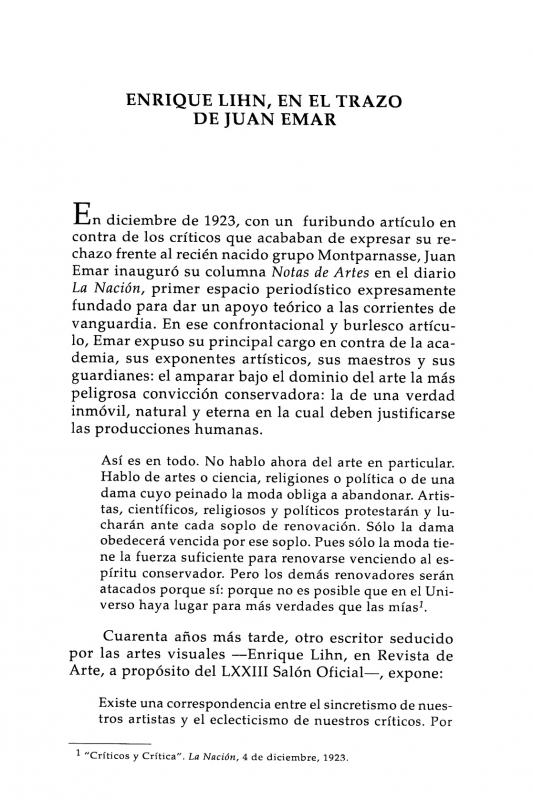This article is similar in many ways to another essay in Crítica situada, the book by Ana María Risco, entitled “Lihn y Pablo Burchard, borrando a Europa.” [On that subject, see in the ICAA digital archive “La escritura de Enrique Lihn sobre artes visuales” (doc. no. 753791) and “Lihn y Pablo Burchard, borrando a Europa” (doc. no. 753819)]. Both essays help clarify what Enrique Lihn (1929–1988) thinks about the “European legacy” with regard to the strengthening of Latin American and Chilean artistic identity on the basis of their own merits. In writing “Lihn y Eugenio Téllez en la tierra sin suelo,” the author used the catalogue Eugenio Téllez, descubridor de invenciones (1988) as a reference. However, the exhibition held a couple of years earlier at Casa Larga (1986) cannot be overlooked.
The title that the author chose for her essay hints at an analogy regarding the careers of these two artists who worked in different places, hence the paradoxical and errant idea of “la tierra sin suelo.” In Lihn’s case, the concept is highlighted in three poetry anthologies––Poesía de paso (1966), París: situación irregular (1977), and A partir de Manhattan (1979)––in which the poet establishes a dialogue with European tradition and quotes artists and works to which he was exposed during his visits to overseas cities and museums. Eugenio Téllez (b. 1939), for his part, left Chile in the late 1960s to study printmaking under William Hayter. He later settled in Toronto, Canada, and returned only occasionally to Santiago, Chile.
[For other articles about Lihn’s work, see the following in the ICAA digital archive: “Enrique Lihn, en el trazo de Juan Emar” (doc. no. 753808) by Ana María Risco; “Conversaciones con Enrique Lihn” (doc. no. 754001) by Pedro Lastra; “Enrique Lihn: Entrevistas” (interviews) with Daniel Fuenzalida (doc. no. 754484); and “Enrique Lihn: Escritura excéntrica y modernidad” (doc. no. 778836) by Carmen Foxley].


